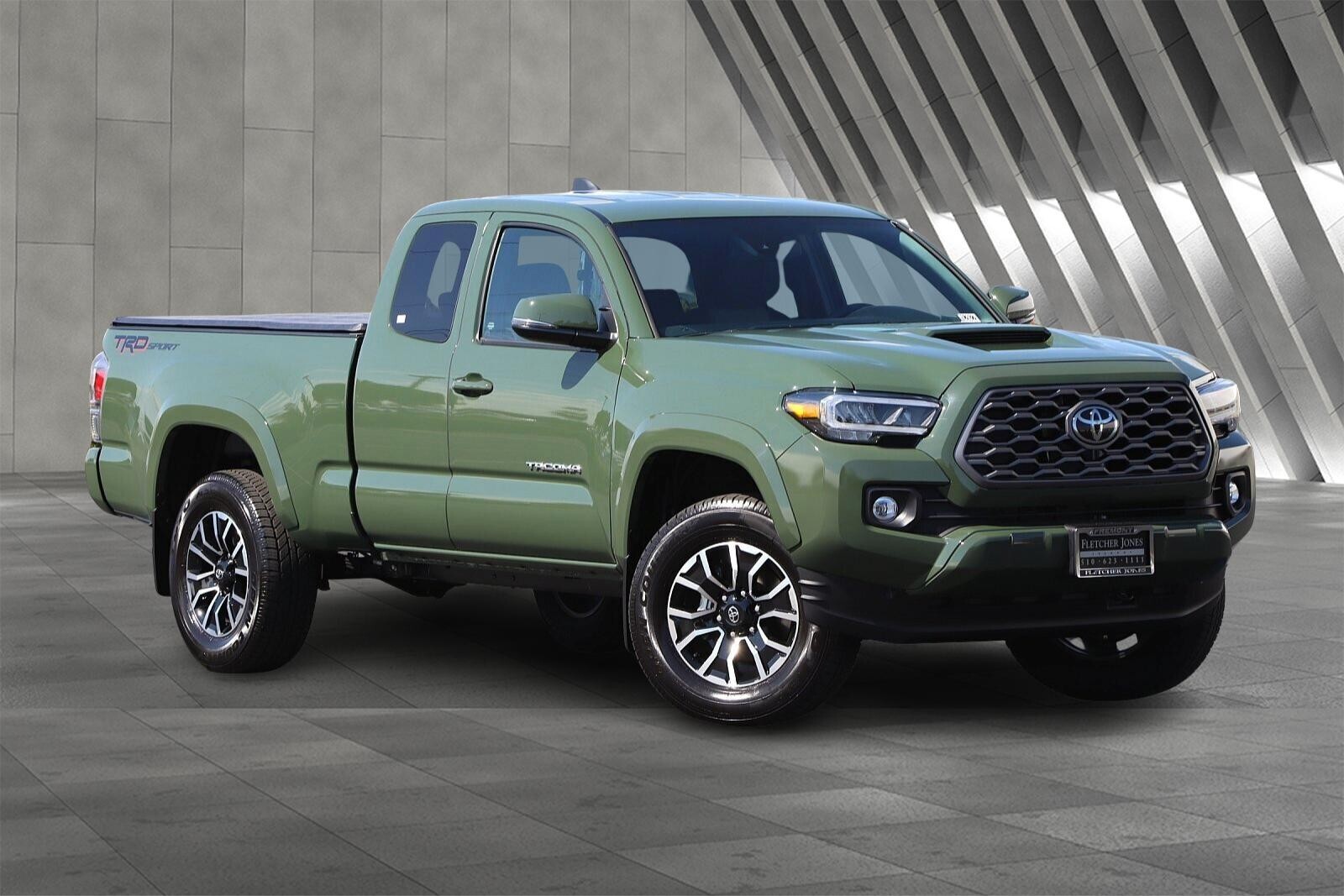Running boards may seem like an afterthought, but for pickup trucks especially full-size and lifted ones they make a noticeable difference in everyday usability.
Whether it’s ease of entry, aesthetics, or protection from road grime, a good set of factory running boards can enhance the truck experience.
However, not all pickups are created equal. Some offer excellent, integrated step solutions from the factory, while others leave owners scrambling for aftermarket help.
Here’s a detailed breakdown of 5 pickups with outstanding factory running boards and 5 that desperately need upgrades.
Pickups With the Best Factory Running Boards
In the world of pickups, utility and style often go hand in hand—and nowhere is that more obvious than with factory-installed running boards. These aren’t just bolt-on accessories anymore.
Today’s best trucks offer running boards that are integrated into the vehicle’s design, sometimes motorized, sometimes tucked in tight, but always aiming to make entry and exit easier while adding a visual punch.
Whether you’re hauling gear, towing heavy, or just picking up groceries, factory running boards can be a game-changer in terms of everyday usability and overall presence. In this article, we break down the pickups that do it best—trucks where the running boards aren’t just an afterthought, but a built-in feature that actually earns their keep.
1. Ford F-150 (Limited and Platinum Trims)
The Ford F-150 continues to impress with its available power-deployable running boards. These boards extend automatically when a door opens and tuck away discreetly when not in use, preserving both ground clearance and visual appeal.
On high trims like Limited and Platinum, the system is standard and well-integrated into the body design. Some trims even offer a kick-switch near the rear for accessing the bed.
Ford’s pickup truck takes a “have it your way” approach, offering buyers an extensive selection of powertrains, body styles, and customization options. Whether it’s equipped with gas-only engines, hybrid powertrains, or available as a full electric vehicle, the F-150 is designed to adapt to a wide variety of needs.
Entry-level trims are built to handle everyday driving and jobsite tasks with ease, while upper-tier versions boast upscale materials and high-end features. For those craving off-road capability, there are also dedicated models built for tackling rocky terrain or hitting the trails.
In terms of ride quality, the F-150 generally performs well whether it’s carrying a load or not. The versions equipped with the twin-turbocharged V-6 deliver strong towing and hauling capabilities. The Raptor R, with its thunderous supercharged V-8 and robust chassis, is especially impressive.
Meanwhile, the Tremor trim strikes a practical balance—it’s geared for off-roading while still being perfectly suitable for daily use. For those who lean toward street-oriented performance, the new F-150 Lobo enters the mix, following the recent debut of the smaller Maverick Lobo.
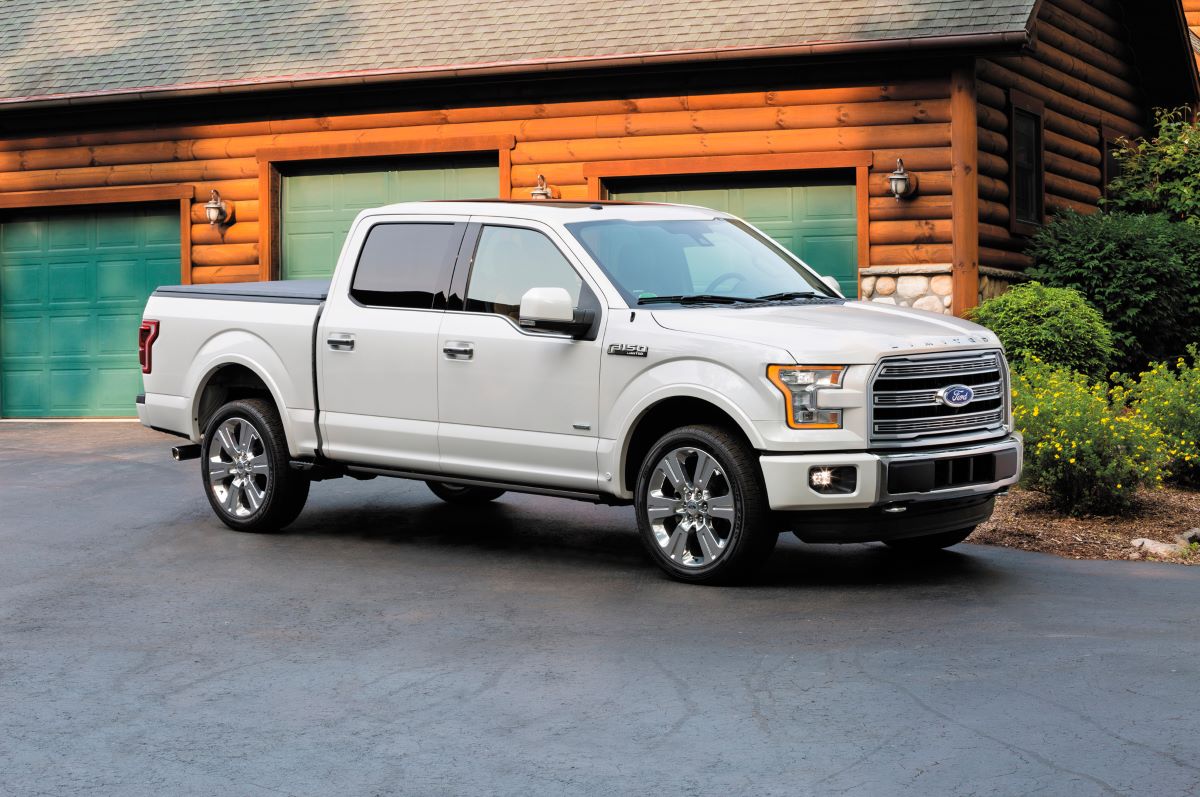
Inside the cabin, large standard screens, a flat load floor for cargo, and a retractable gear shifter all contribute to making the interior functional and adaptable for various tasks.
Despite the well-earned accolades the F-150 continues to receive, there are a few areas where it comes up short, and shoppers should take note. First, while it won’t bother those who favor classic truck styling, Ford hasn’t made significant changes to the F-150’s exterior design, seemingly choosing familiarity over innovation.
Second, the hybrid version suffers from overly sensitive brake pedal tuning, which detracts from an otherwise impressive setup. Finally, the most desirable F-150 configurations come with a steep price tag—substantially higher than that of the base trims—so buyers should be ready to pay a premium for the best the lineup has to offer.
Even with those complaints, our enthusiasm for the F-150 remains strong. It’s disappointing that Ford plans to strip features from some of the lower trims for the 2025 model year, but the brand has also reduced base prices to reflect the changes.
Regardless, the F-150 lineup continues to stand out for its incredible range and nearly limitless configurability, securing its place as a leading option for pickup truck buyers.
2. Ram 1500 Limited
Ram’s luxury-focused Limited trim offers a solid power running board system that deploys quickly and provides a broad, sturdy stepping surface.
It blends functionality and upscale styling, with a durable construction that holds up well to both daily use and off-road conditions. Ram also engineered them to retract tightly for better aerodynamics and a sleeker look.
Pickup trucks have come a long way from their strictly utilitarian beginnings, and today, many serve as both hardworking haulers and comfortable family vehicles. The 2024 Ram 1500 is a prime example of this evolution, standing out as one of the most refined full-size trucks on the market.
At the top of the lineup sits the Limited trim, which reinforces the Ram’s premium credentials with a suite of luxury features and comfort-first design. While it’s not the most expensive model in the range, it is without a doubt the most plush and feature-rich.
With a starting price of $66,055, the 2024 Ram 1500 Limited positions itself well above the entry-level Tradesman, which begins at $39,420. However, it’s still more affordable than the high-performance Ram TRX, which starts at $96,585 largely due to its off-road-focused upgrades.
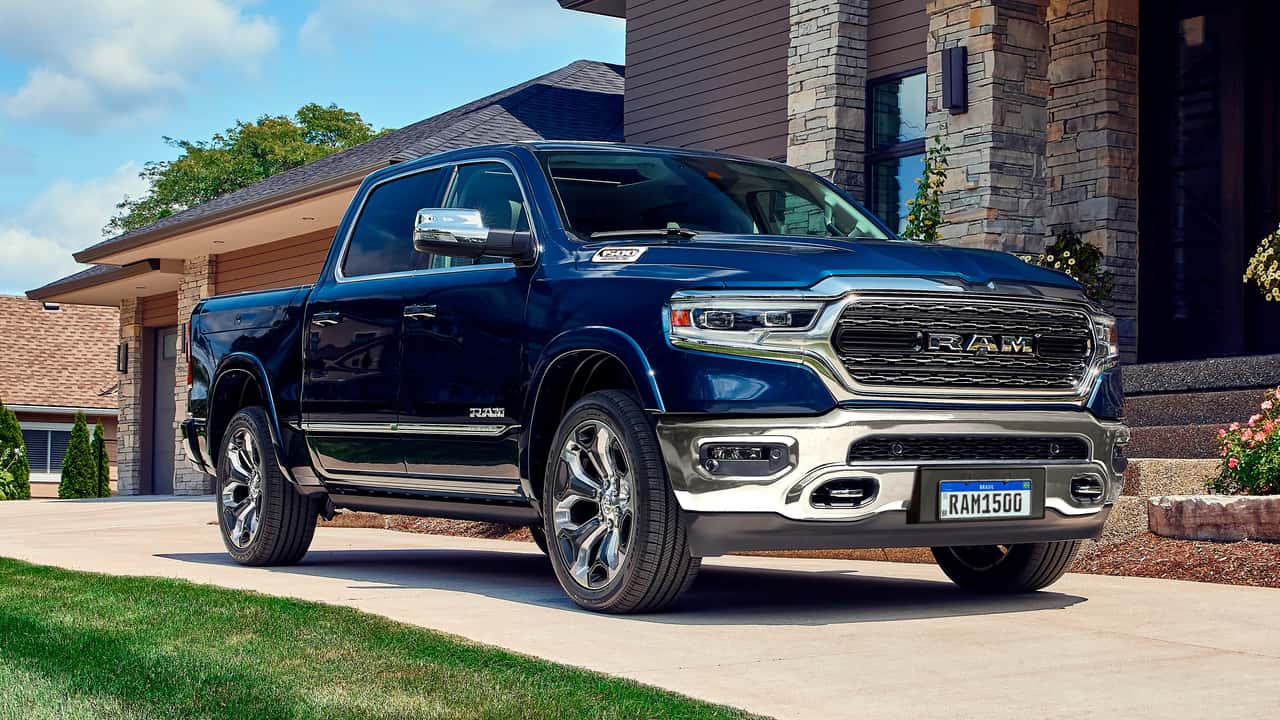
The Limited is standard with the Crew Cab body style and a five-foot-seven-inch bed, though buyers can opt for a longer six-foot-four-inch bed. It also includes a spray-in bedliner as standard, with optional upgrades like a $1,095 multi-function tailgate and the $995 RamBox cargo management system available.
Inside, the Limited trim showcases the most upscale interior in the 1500 lineup. The two-row cabin is exceptionally spacious, offering plenty of head- and legroom for front and rear passengers.
Standard interior equipment includes premium leather upholstery, a large 12-inch touchscreen with Apple CarPlay and Android Auto, wireless device charging, dual-zone automatic climate control, remote keyless entry, and heated and ventilated seats in both rows. For buyers wanting to level up further, available options include a dual-pane panoramic sunroof and a 19-speaker Harman Kardon premium audio system.
Under the hood, the Ram 1500 Limited comes equipped with a 5.7-liter Hemi V8 engine making 395 horsepower. This powertrain is mated to an eight-speed automatic transmission and comes with rear-wheel drive by default, though four-wheel drive is available.
Fuel economy is estimated at 18 mpg in the city and 23 mpg on the highway with RWD, while the 4WD version delivers 18 mpg city and 22 mpg highway.
The truck’s towing capacity tops out at 8,190 pounds when properly equipped. Other standard performance features include air suspension with adjustable ride height, while optional add-ons include a limited-slip rear differential and a trailer tow prep package.
The 2024 Ram 1500 Limited doesn’t just aim to be a capable pickup—it aspires to redefine what luxury can look and feel like in a full-size truck, and in many ways, it succeeds.
3. Toyota Tundra Capstone
Toyota redesigned the Tundra with premium features in mind, and the Capstone trim shows it. One standout is its illuminated, power-deployable running boards, which are wide enough to accommodate boots and built with corrosion-resistant materials.
Paired with a hydraulic bed step, the running board system makes ingress and egress impressively easy for a full-size truck.
Half-ton pickups have steadily blurred the line between rugged utility and luxury, with modern offerings rivaling upscale sedans in comfort and features. Today, if you’re prepared to spend upwards of $70,000, you can outfit a Ford F-150 or Ram 1500 with premium leather, high-end materials, and top-tier tech.
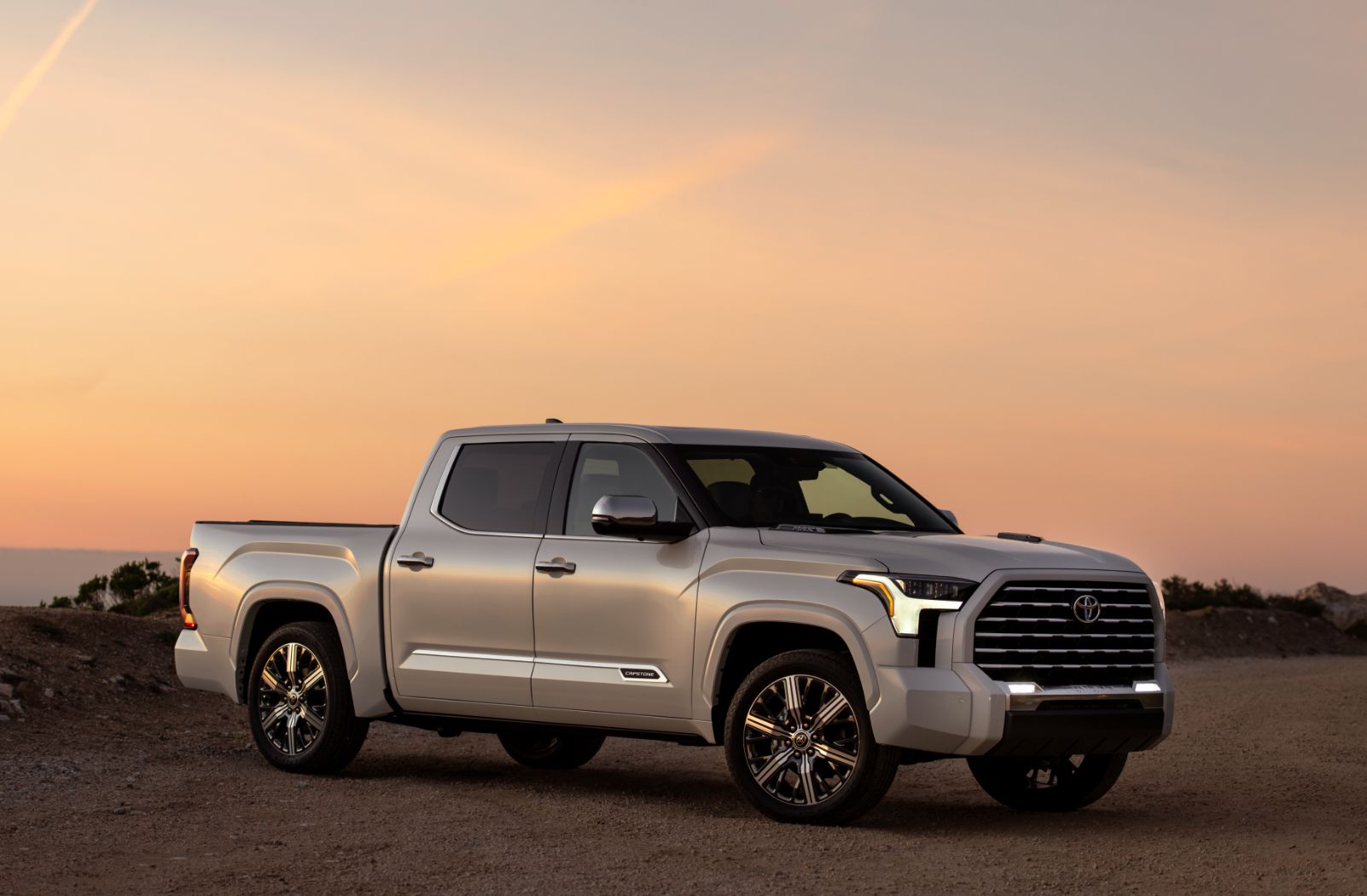
Toyota follows this same path with the 2022 Tundra, but takes a different approach when it comes to packaging. Instead of spreading high-end features across numerous options and packages, Toyota consolidates all the luxury into one appropriately named trim: the Capstone.
Introduced for the 2022 model year, the Capstone trim debuts on both the Tundra pickup and the Sequoia three-row SUV. This trim brings together the best the lineup has to offer, including the most premium leather upholstery, the most chrome-heavy exterior design, and a full suite of advanced technology—all bundled into a single, top-spec configuration. The question remains, though: is its $74,000 starting price justified?
4. GMC Sierra Denali Ultimate
GMC’s Denali Ultimate trim takes refinement seriously, including a set of multi-functional, power-retractable running boards with pivoting rear sections.
This lets the step slide rearward to assist with bed access ideal for fifth-wheel setups or toolboxes. The design integrates seamlessly with the truck’s styling and is highly praised for durability and innovation.
Full-size pickup trucks are so meticulously benchmarked against one another that significant deviations are rare. Take the 2022 GMC Sierra Denali Ultimate, for example.
Had it competed in our most recent comparison test, its 5.4-second sprint to 60 mph would have placed it just behind the Ford F-150 PowerBoost at 5.3 seconds, while still edging out the Toyota Tundra TRD Pro, which clocked in at 5.9 seconds.
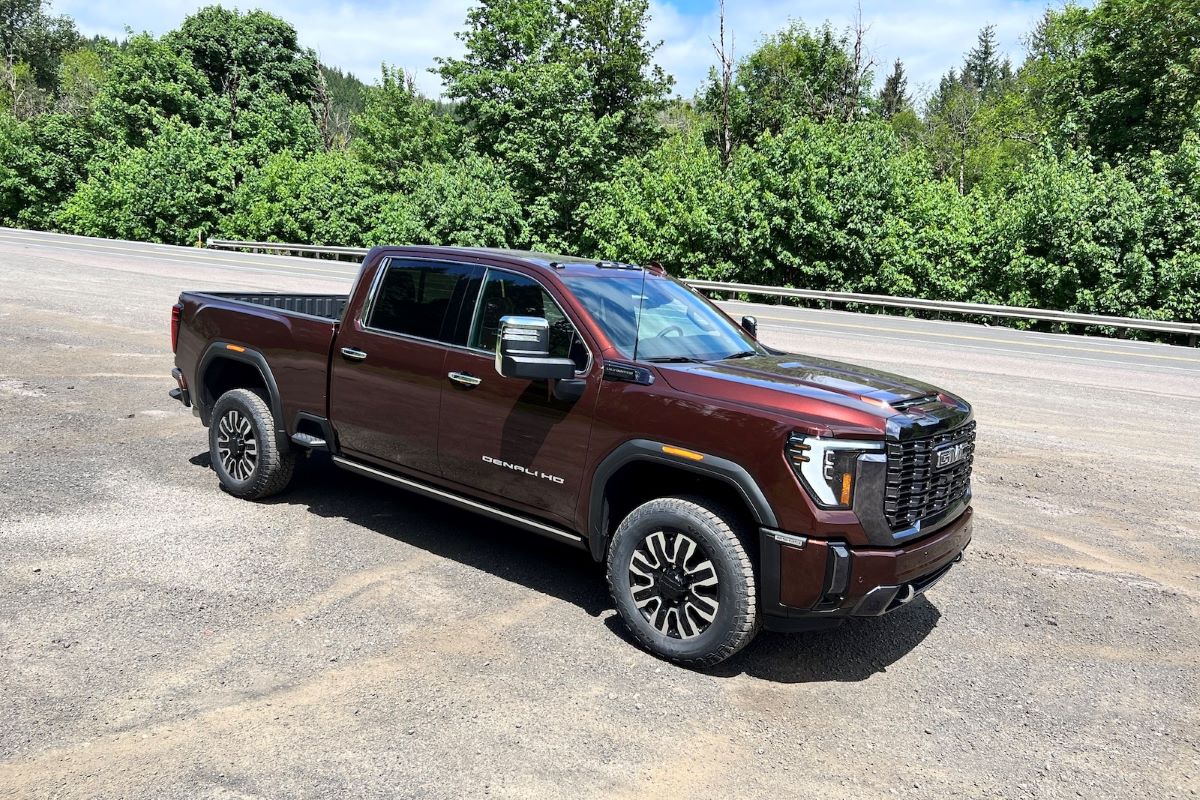
Under the hood, its 6.2-liter V-8 generates 420 horsepower—positioned between the hybrid Tundra’s 437 horsepower and the Ram 1500 Limited’s 395-hp Hemi V-8. And this back-and-forth continues across nearly every metric, from towing capacity and braking to available features and price.
In such a hyper-competitive segment, a truck needs a standout feature to truly differentiate itself—something like Ford’s onboard generator or the Ram’s meticulously crafted interior.
For the Sierra Denali, that unique advantage comes in the form of Super Cruise. GM remains the only automaker offering this advanced hands-free driving technology, and no rival system—Ford BlueCruise included—matches its capability.
If you spend considerable time on the highway, Super Cruise could very well be the deciding factor that nudges you toward the Sierra over equally luxurious offerings from other brands. Just be aware that availability has been inconsistent, with GMC occasionally halting Super Cruise production due to supply constraints.
5. Rivian R1T
The all-electric R1T comes with integrated side steps that, while not traditional running boards, are wide, rugged, and cleverly built into the vehicle’s unique design.
They serve as rock sliders while also offering a functional step, making them ideal for off-roaders and everyday drivers alike. Plus, Rivian’s approach is minimalist and modern, unlike many clunky aftermarket options.
Rivian is launching the summer season with another limited-time offer on its flagship R1 lineup. For a short period, buyers or lessees can receive $5,000 off a new Tri-Motor R1S or R1T—an aggressive incentive aimed at attracting more customers to its all-electric adventure vehicles.

After leaked images of the upcoming 2026 Quad Motor Rivian R1T surfaced, I connected with fellow enthusiasts online, and we all agreed on one thing: Rivian is truly finding its footing as a brand. While the company faced its fair share of challenges ramping up production of its first-generation R1 models, those early growing pains seem to be in the rearview.
The second-generation R1S and R1T are selling well and are playing a critical role in supporting Rivian’s broader ambitions. Revenue from these vehicles is helping fund future offerings like the R2, which has recently entered real-world validation testing (and yes, the camo wrap looks sharp).
Now that Rivian has reached a more stable point in both production and inventory, it’s able to offer compelling discounts—an undeniable win for buyers looking to switch to electric without giving up rugged performance. Just last month, we reported on another strong lease offer from Rivian, this time for its Dual Motor R1 models equipped with the Max battery pack.
Pickups That Need Aftermarket Running Boards
Not every truck rolls off the lot ready for real-world practicality. While many modern pickups boast towering ride heights and aggressive stances, too often they skip out on one critical piece of gear—running boards.
Whether it’s to cut costs or maintain a “clean” design, some manufacturers leave buyers to fend for themselves when it comes to getting in and out of their truck comfortably. If you’ve ever had to leap into the cab or awkwardly help a passenger climb aboard, you know exactly what’s missing.
In this article, we spotlight the pickups that really should’ve come with running boards from the factory and why adding a quality aftermarket set isn’t just a nice-to-have, but almost a necessity.
1. Chevrolet Silverado WT/Custom Trims
While higher trims of the Silverado offer decent step options, the base WT (Work Truck) and Custom models often come without running boards altogether, making entry a struggle especially with the truck’s relatively high ride.
The basic design also doesn’t lend itself to easily adding OEM steps, pushing many owners toward the aftermarket.
Regardless of how you configure the 2025 Chevrolet Silverado, you’ll get a truck that’s ready to work. Even in its base form, powered by a turbocharged four-cylinder engine, the Silverado delivers enough punch to get moving with confidence.
For those who need greater strength, two available V-8 engines offer more towing and hauling muscle—plus they deliver a pleasing exhaust note.
Alternatively, there’s the smooth, torquey diesel engine, which blends strong pulling power with excellent fuel efficiency. In our First Drive review of the Silverado 1500 ZR2 Duramax Diesel, we applauded its off-road capabilities and impressive driving range.
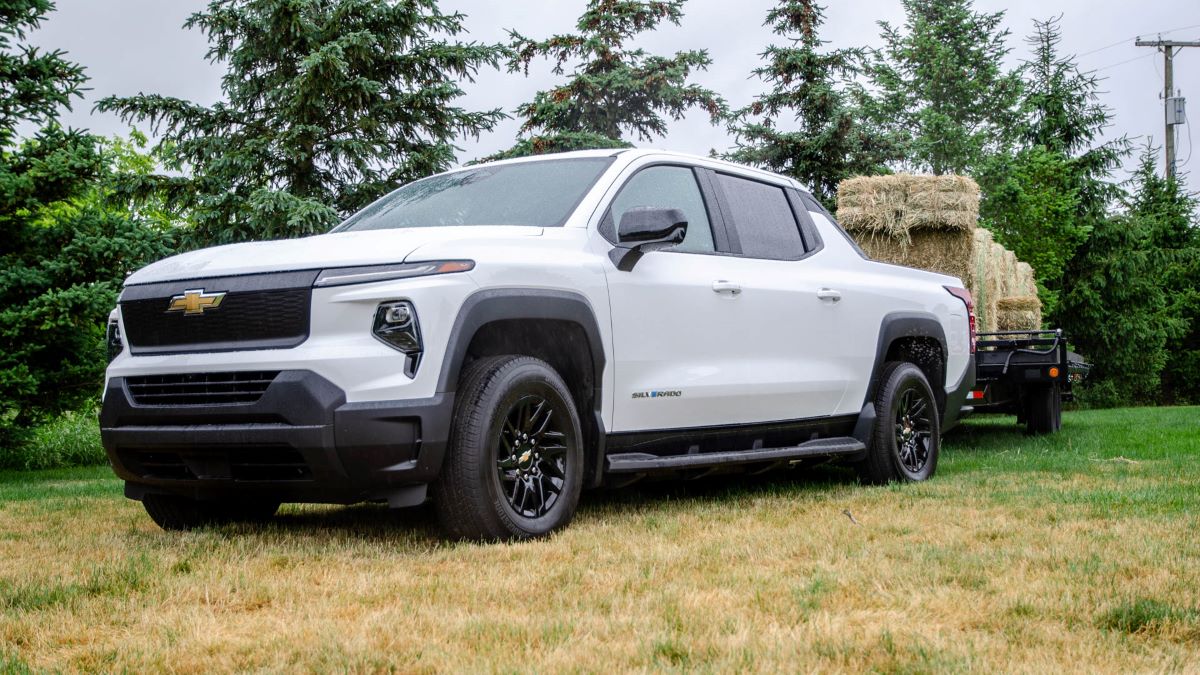
Chevy’s powertrains are offered across a wide range of cab and bed configurations, as well as various trims, allowing the Silverado 1500 to adapt to different roles—from a road-going performance truck to a trail-ready crawler or even a refined daily driver.
Super Cruise is available for added comfort during long highway drives, and when it’s time to get down to business, the Silverado proves its worth on the job site with rear bumper bed steps and a versatile six-mode tailgate.
The Silverado 1500’s solid position in our rankings is owed in part to key upgrades introduced with the 2022 refresh. That update brought a redesigned interior with higher-quality materials and larger screens to upper trims. However, the lower trims continue to use the older interior layout, which we’ve noted feels dated and less premium by comparison.
If Chevrolet can smooth out the ride quality and give the Silverado a more universally appealing exterior design, it has a real shot at dethroning the Ford F-150 from the top of the full-size pickup segment. But even with those flaws in play, there’s plenty to like here—and we’re fully comfortable recommending the Silverado 1500 to anyone shopping for a capable full-size truck.
2. Nissan Titan
The Titan offers only basic tube steps on most trims, and even those are optional. The factory solutions feel like an afterthought narrow, unlit, and with limited grip in wet conditions.
Aftermarket boards provide a better stepping surface, and many owners opt for drop steps or AMP Research power boards to make up for the factory’s lackluster effort.
After a two-decade run, the Nissan Titan is taking its final bow. The full-size pickup remains in the lineup for 2024, but it’s clearly outshined by competitors in a fiercely contested segment. Nissan never managed to perfect the Titan’s formula; from beginning to end, the truck struggled with capability, refinement, and overall value.
Still, there are certain qualities we’ll genuinely miss about the Titan. Every model in the lineup comes with a robust V-8 engine, which is paired with a smart nine-speed automatic transmission. The cabin remains impressively quiet, and Nissan equips the Titan with a generous suite of active safety technologies.
Unfortunately, the Titan’s flaws tend to eclipse its strengths. When it comes to payload and towing capacity, it falls behind class leaders, and the driving dynamics—especially when the truck is unloaded—don’t offer much confidence.
The interior doesn’t help matters either, with a design and materials that feel low-rent compared to its peers. Its underwhelming fuel efficiency seals its fate.
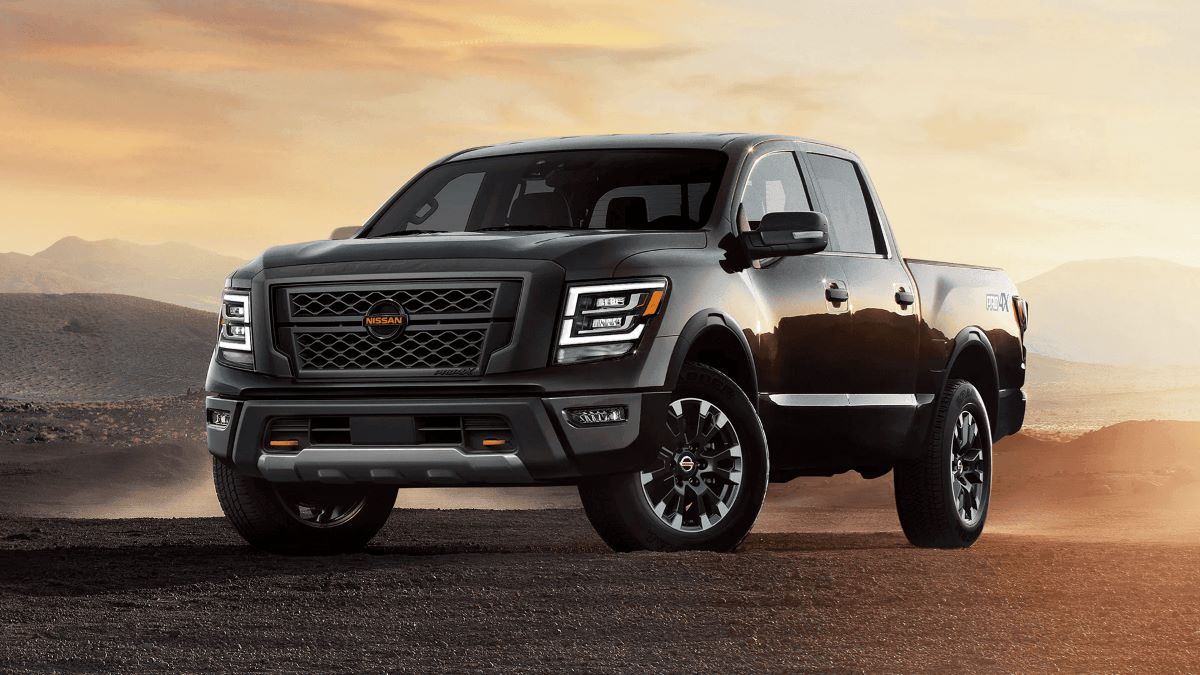
Choice in any vehicle segment is generally a good thing for consumers, but the Titan just couldn’t hold its own. Its simplicity and no-nonsense demeanor gave it a certain appeal, and we’ll miss that. However, Nissan’s decision to retire it seems justified—it was the weakest link in the lineup.
For the 2024 model year, Nissan offers the Titan with a single powertrain option. A 5.6-liter V-8 engine delivers 400 horsepower and 413 lb-ft of torque, working in tandem with a nine-speed automatic transmission.
Power is sent to the rear wheels as standard, with four-wheel drive available across the range. In our testing, a Nissan Titan Pro-4X Crew Cab accelerated from 0 to 60 mph in 7.3 seconds. A
ccording to EPA estimates for 2023, rear-wheel-drive models post the best fuel economy, rated at 16 mpg city and 21 mpg highway. Four-wheel-drive versions fall in line at 15/21 mpg, while the off-road-focused Pro-4X trim—offered only with 4WD—comes in slightly lower at 15 mpg city and 20 mpg highway.
The 2024 Titan reaches its highest payload capacity of 1,697 pounds in the SV trim, configured with the King Cab and four-wheel drive. For those looking to tow the most, the SV and Platinum Reserve Crew Cab models with rear-wheel drive offer the best numbers, with a maximum towing capacity of 9,317 pounds.
Although we’ve consistently found the Titan underwhelming at the limits of its capability, it handles everyday tasks—like towing a horse trailer—just fine and without issue.
3. Ford Ranger
Although stylish and capable, the Ford Ranger lacks robust step options from the factory, especially in base trims.
Most configurations don’t come with running boards, and the ones available through Ford are slim and not particularly ergonomic. Aftermarket solutions like wide nerf bars or retractable steps are a must for serious usability.
The latest-generation Ford Ranger made its debut for the 2024 model year, bringing with it a series of significant updates to the midsize truck lineup. In addition to a full redesign inside and out and the integration of updated technology, the 2024 Ranger also expanded its powertrain options.
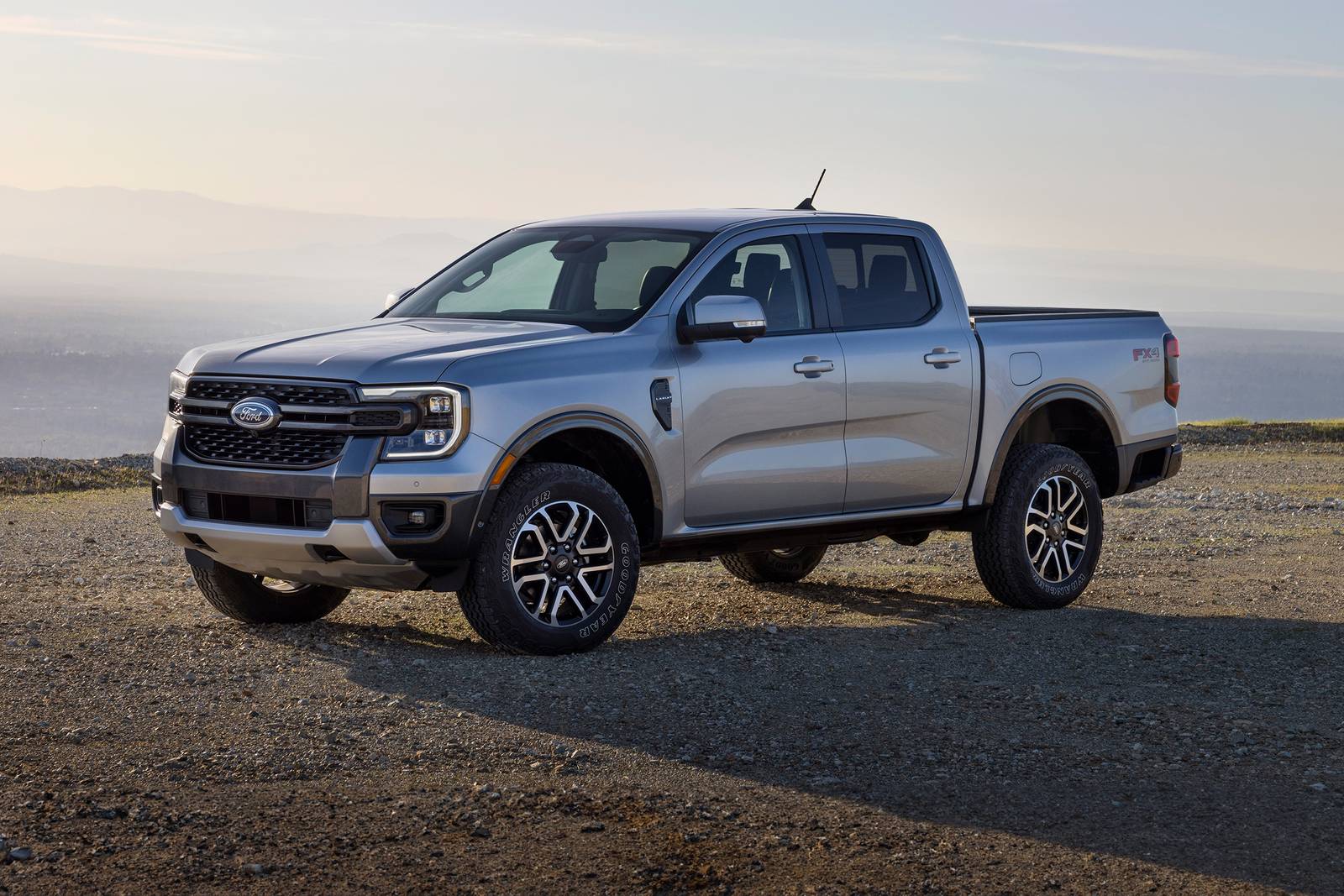
Joining the returning turbocharged 2.3-liter inline-four EcoBoost—previously the only available engine—is the more powerful twin-turbocharged 2.7-liter V6 EcoBoost. Now, it appears that the 2025 Ford Ranger also benefits from a fresh update to the familiar 2.3-liter EcoBoost engine.
Ford Authority has verified with Ford Truck Communications Manager Dawn McKenzie that the 2025 Ranger is equipped with an “all-new” 2.3-liter EcoBoost engine built on Ford’s Modular Power Cylinder (MPC) engine platform.
This updated engine architecture has already been applied to other recent Blue Oval vehicles, including the new S650-generation Ford Mustang introduced for 2024 and the refreshed 2025 Ford Explorer.
4. Toyota Tacoma SR/SR5
While the TRD Pro and Off-Road trims have more rugged side accessories, the SR and SR5 trims of the Tacoma are notoriously under-equipped in the running board department.
The factory add-ons are thin and short, often failing to provide meaningful support. Many owners turn to aftermarket drop steps or rock sliders with integrated steps for a more functional upgrade.
The spotlight of the 2024 Toyota Tacoma’s launch has largely shone on the most eye-catching versions of this latest midsize truck, like the rugged TRD Pro and the all-new Trailhunter trims. But what hasn’t gotten much attention?
The budget-friendly variants. It’s important to remember that the Tacoma holds its title as the best-selling midsize pickup in America—not solely because of its high-end models, but also thanks to its appeal among value-conscious buyers and commercial users. Chief among those is the entry-level SR trim.
Interestingly, Toyota’s press imagery for the new Tacoma doesn’t include shots of the SR, or even the well-liked SR5, which sits just one step up. Naturally, we were curious about what the 2024 Tacoma SR actually looks like.
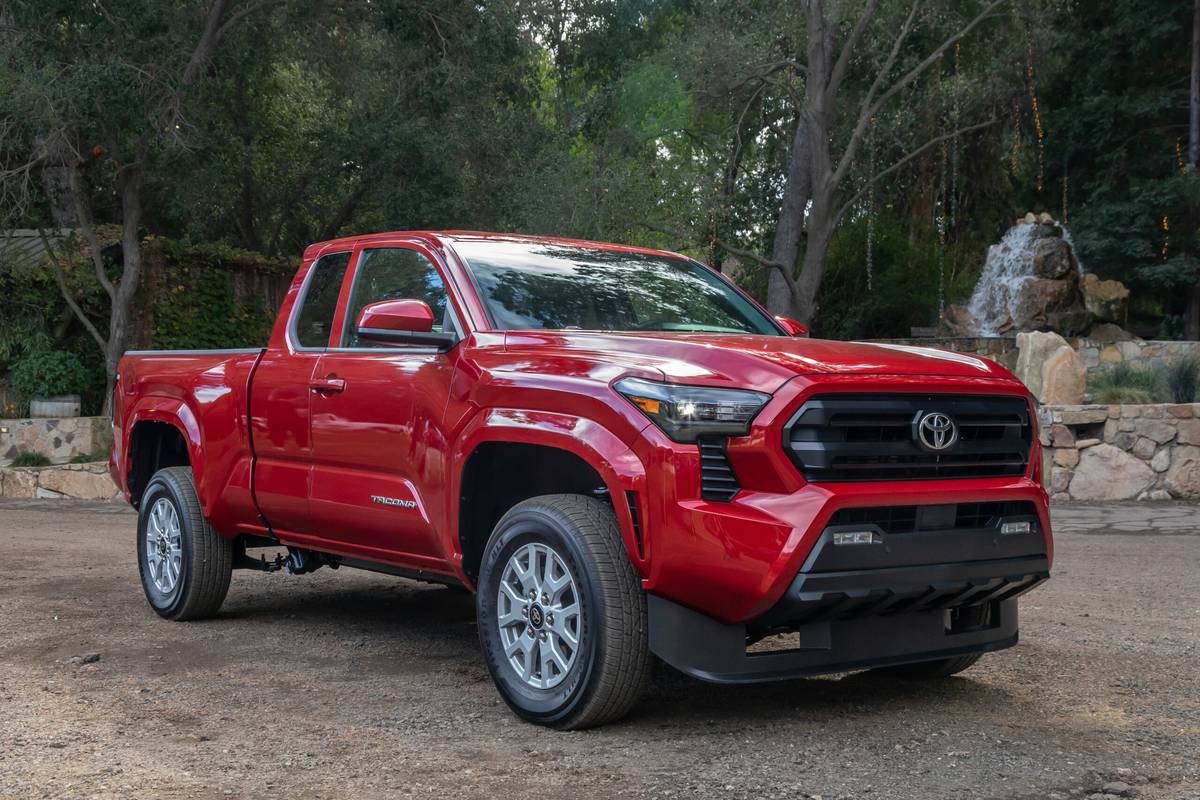
We finally got a glimpse when Toyota included the base model in a lineup graphic on its website, nestled among trims like the SR5, the returning PreRunner, TRD Off Road, TRD Sport, Limited, TRD Pro, and Trailhunter.
Unfortunately, Toyota hasn’t yet shared visuals of the most affordable configuration: the two-door, long-bed SR XtraCab. Instead, they’ve only shown the SR in what is expected to be a slightly more expensive Double Cab (crew cab) format with the short bed.
Still, hats off to the Toyota marketing team for choosing to present the SR Double Cab in classic work-truck fashion—wearing plain white paint that perfectly suits its steel wheels and unpainted black plastic grille, bumpers, mirrors, and door handles.
As far as the SR’s overall design goes, it sticks closely to the no-frills formula we’ve seen in previous generations. However, the steel wheels have finally been updated for the first time in decades.
Gone are the outgoing Tacoma SR’s five-spoke, star-shaped steelies. In their place for 2024 are new 17-inch stamped steel wheels with small circular cutouts around the rim, giving off an even stronger utilitarian, commercial-grade vibe.
5. Hyundai Santa Cruz
As a unibody pickup with a lower stance, the Santa Cruz technically doesn’t require running boards but its high doors and sporty styling make entry awkward for shorter individuals.
Hyundai does not offer any factory running boards, and there’s limited OEM support. However, the aftermarket has stepped in with functional, stylish options tailored to the Santa Cruz’s unique dimensions.
Factory running boards can be more than just a cosmetic add-on they’re a functional, sometimes essential, feature for large trucks.
If the practicality of a pickup truck appeals to you but full-size models like the Chevy Silverado or Ford F-150 feel too large or expensive, the 2025 Hyundai Santa Cruz might be the ideal solution.
Built on the Tucson crossover platform, this compact pickup offers the best of both worlds. Its four-foot bed adds utility, making it perfect for hauling bulky items like mountain bikes or landscaping materials, without compromising on maneuverability or comfort.
The base engine is a 191-hp 2.5-liter four-cylinder, available with front- or all-wheel drive. However, if towing or faster acceleration is a priority, the upgraded 281-hp turbocharged four-cylinder engine is a better choice. It increases the towing capacity to a solid 5,000 pounds, making the Santa Cruz more capable than its size suggests.
When not performing truck duties, the Santa Cruz shines as an everyday vehicle. It shares the Tucson’s smooth ride and well-insulated cabin, offering a quiet, comfortable environment filled with modern tech and convenience features.
While it’s slightly more expensive than its main rival, the Ford Maverick, the Santa Cruz’s premium design and features justify the cost. It’s no surprise it earned a place on the Editors’ Choice list for 2025.
For the 2025 model year, Hyundai has refreshed the Santa Cruz’s look, giving it a tougher, more rugged appearance. The redesigned grille and front bumper mirror the styling of the new Tucson SUV, while the new XRT trim level pushes the off-road vibe even further.
The XRT features unique front-end styling, tow hooks, exclusive 18-inch wheels, chunkier tires, and new daytime running lights. Inside, Hyundai has upgraded the optional dual-screen infotainment system. Gone are the separate screens; now a single panel houses two 12.3-inch displays running the latest Hyundai software.
This system supports wireless Apple CarPlay and Android Auto, over-the-air updates, USB-C ports, a fingerprint scanner for added security, and Hyundai Pay, the company’s in-car payment feature. Lower trims come with a single 12.3-inch display and analog gauges. The interior also benefits from redesigned elements, including the dashboard, center console, climate controls, and steering wheel.
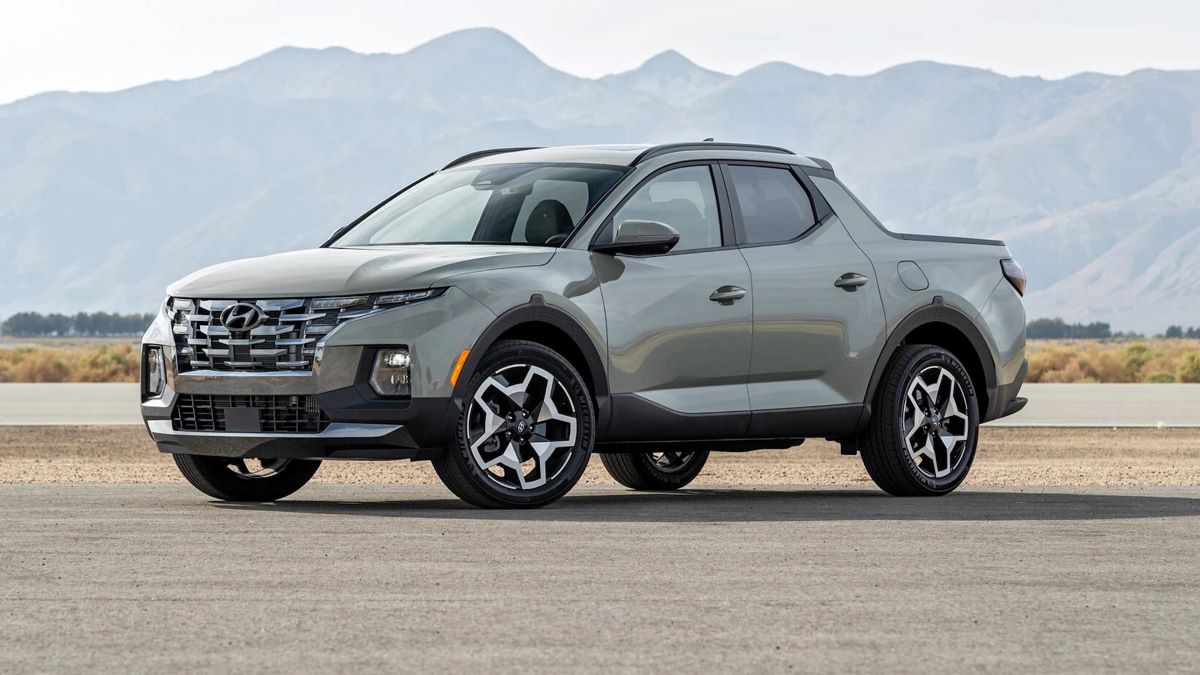
The pricing for the 2025 Santa Cruz starts at $30,245 and goes up to $44,245 depending on the trim and options. The SE and SEL are the more affordable choices, but the XRT is the standout pick.
It commands a higher price but comes standard with the more powerful turbocharged engine and all-wheel drive—features that are optional or unavailable on lower trims. The XRT also includes rugged visual upgrades and dark chrome accents that add to its appeal.
Under the hood, the Santa Cruz offers two engine options. The SE and SEL come with a naturally aspirated 2.5-liter four-cylinder producing 191 hp and 181 lb-ft of torque, paired with an eight-speed automatic.
In testing, this engine felt underwhelming in the Tucson, and similar results can be expected here. The Night, XRT, and Limited trims, on the other hand, benefit from a 281-hp turbocharged 2.5-liter engine making 311 lb-ft of torque.
This engine is mated to an eight-speed dual-clutch transmission and significantly improves performance. All trims except the SE are available with all-wheel drive. Being shorter and lower than traditional midsize trucks, the Santa Cruz is easier to navigate through tight city streets, and in its Limited trim, it delivers a composed, refined driving experience.
Overall, the 2025 Hyundai Santa Cruz continues to stand out in the compact pickup segment by offering SUV-like refinement alongside genuine utility. It’s a smart choice for anyone who wants the versatility of a truck without giving up everyday comfort and ease of use.
Brands like Ford, Ram, and GMC are pushing the envelope with smart, power-deployable systems, while others like Chevy and Toyota often leave basic trims to fend for themselves.
If you’re looking for the best out-of-the-box step support, stick with trims that prioritize integrated boards. Otherwise, the aftermarket world offers a wide range of options, from budget-friendly tube steps to high-end electric retractables.

